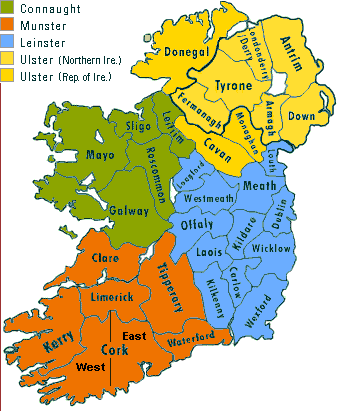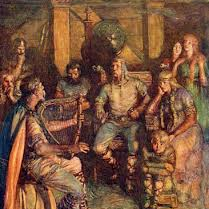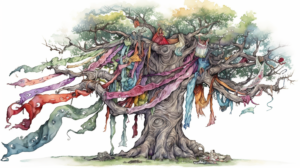How and When were the 32 Irish Counties formed?
THE division of Ireland into shires or counties is of Anglo-Norman and English origin. The counties generally represent the older native territories and sub-kingdoms.
King John formed twelve counties in 1210. Those parts of Ireland which were under English jurisdiction he parcelled out into twelve shires or counties: namely, Dublin, Kildare, Meath, Uriel (or Louth), Carlow, Kilkenny, Wexford, Waterford, Cork, Kerry, Limerick and Tipperary.
He directed that in all these counties the English laws should be administered. But it must be always borne in mind that these arrangements, including the administration of the law, were for the settlers only, not for the natives, who were then and long afterwards outside the pale of the law. The king returned to England in August 1210, leaving John de Grey lord justice, to whom he committed the task of carrying out his arrangements. During the remainder of his reign, Ireland was comparatively quiet.
King’s County and Queen’s County were formed in the time of Queen Mary.
Sir Henry Sidney, about 1565, formed the county Longford from the ancient district of Annaly. He also divided Connaught into six counties:—Galway, Sligo, Mayo, Roscommon, Leitrim, and Clare (but Clare was subsequently annexed to Munster, to which it had anciently belonged).
Sir John Perrott, about 1584, formed the following seven counties of Ulster:—Armagh, Monaghan, Tyrone, Coleraine (now the county Derry), Donegal, Fermanagh, and Cavan: the other two Ulster counties, Antrim and Down, had been constituted some time before.
In the time of Henry VIII, Meath was divided into two: Meath proper, and Westmeath. (c.1543)
This makes thirty, so far.
At first the county Dublin included Wicklow; but in 1605, under Sir Arthur Chichester, Wicklow was formed into a separate county.
This makes the present number thirty-two.
Sources;
- From A Concise History of Ireland by P. W. Joyce



